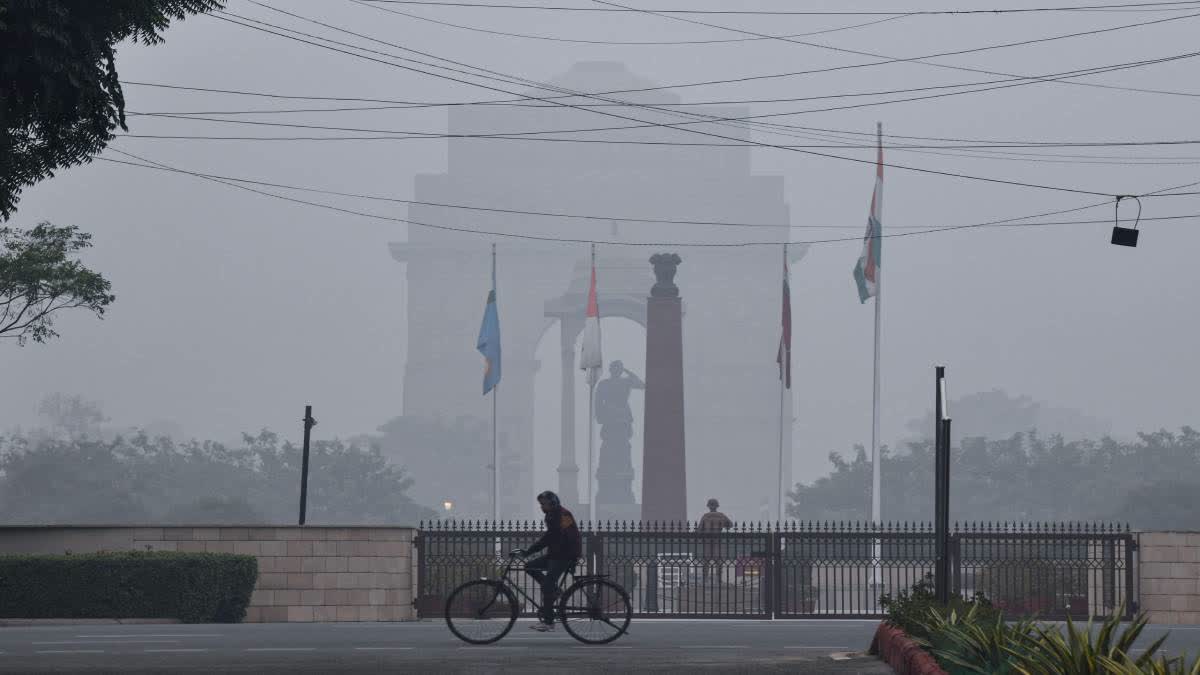New Delhi: It's mid-February and the usual heat is back in Delhi with Tuesday's maximum temperature recorded at 30°C, the hottest of the season. Wednesday's 26.5°C was also three degrees above the notch.
This follows a record-breaking warm January, warmest since 2019, with the average temperature hovering at 21.1°C. The lowest temperature has also been on an upward trajectory in the last few days, hitting 11.6°C on Wednesday, just above normal.
As per the India Meteorological Department (IMD) forecast, surface winds will remain strong during the day until Friday, followed by fog conditions. Night temperature is also likely to reach 13°C by February 17, with the maximum temperature remaining between 27°C and 29°C.
"Due to an extremely feeble western disturbance, the entire North india continues to experience an elevation in mercury levels with only one proper day of cold wave since December. This weak, western disturbance has also adversely affected rainfall and snowfall which have furthered a warmer and drier winter, causing a sharp decline in northwesterlies towards regions around Delhi and Haryana from the Himalayas forming the third reason for the increase in temperatures. This combination of dry and warm winters is taking an incessant toll on the winter crops of wheat, chickpeas and rapeseed," environmentalist Manu Singh told ETV Bharat.
Similar to 2022 and 2016, the current year has not experienced any cold wave days in January and February remained free from cold waves so far, due to feeble northwesterlies.
The IMD has issued a warning of excess temperatures and deficient rainfall in most parts of the country. Deficient rainfall and snowfall have added to the increased temperature and poor air quality in Delhi and surrounding areas. The Air Quality Index (AQI) remained in the moderate to poor category, due to surface winds.
"The above-normal temperatures in Delhi this February are a direct consequence of weaker western disturbances, which typically bring cold air to the region during the winter months. With these disturbances weakening, there has been a significant reduction in cold waves and rainfall, causing an increase in temperatures. This disruption not only affects air quality due to reduced wind speeds but also puts agricultural stability at risk, as crops like wheat and mustard depend on a consistent winter chill for proper growth. If this trend continues, we will see not only worsening air pollution but also decreased agricultural yields, which could have long-term socio-economic consequences. This is a clear signal that we must address the broader issue of climate change and its impact on our weather patterns," Selomi Garnaik, a climate expert from Greenpeace, told ETV Bharat.
"Temperatures for northwest plains and central India including Delhi and NCR are above normal in February. The reason can be attributed to the weak western disturbance which failed to dump heavy snowfall over the hills and almost dry weather conditions in the plains of northwest India. Low Humidity was responsible for less dense fog conditions. Whenever fog persisted throughout the day, it led to cold conditions which were absent this time. That is why day temperatures are above normal. On the other hand, clear skies and the absence of rain also contributed to higher temperatures. Frequent western disturbances altered the wind flow from a cold northwest direction to warm and humid winds from the southwest direction which led to rise in a minimum temperatures," Mahesh Palawat, vice-president of Skymet Weather Services, said.
Impact on Crops
Increased temperatures coupled with low rainfall can have a drastic impact on agriculture. IMD has indicated that wheat crops in their fruition phase may be affected. Mustard and chickpea may ripen prematurely, impacting yield. Horticultural crops such as apples and other stone fruits may experience premature flowering, resulting in poor fruit quality and reduced yields. To mitigate the effect, experts recommend spasmodic light irrigation to continue crop growth.
However, IMD added that normal to sub-normal highest temperatures in Madhya Pradesh and Uttar Pradesh can also mitigate crop damage due to cold waves.
Also Read:



